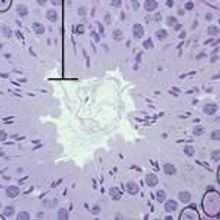sexually transmitted diseases

Accessible Lateral Flow Assays: Test to Treat, Test to Protect
Deanna MacNeil, PhD | Oct 18, 2023 | 3 min read
From development to implementation, Rosanna Peeling discusses the importance of rapid tests for public health.

The Vaginal Microbiome is Finally Getting Recognized
Hannah Thomasy, PhD, Drug Discovery News | Sep 25, 2023 | 10+ min read
Vaginal dysbiosis has long been a taboo subject, but studying and optimizing the vaginal microbiome could be a game changer for women's health.

Science Falls Behind as Syphilis Stages Another Comeback
Bhargavi Duvvuri, Undark | Feb 21, 2023 | 6 min read
Syphilis is among the oldest known sexually-transmitted infections. Scientists still struggle to detect and treat it.

How Chlamydia Guards Itself Against the Immune System
Natalia Mesa, PhD | Jan 2, 2023 | 4 min read
The bacterium produces a particular protein that allows it to sneak past the human immune system even while triggering inflammation.

Infographic: How Chlamydia Evades Immune Detection
Natalia Mesa, PhD | Jan 2, 2023 | 2 min read
Chlamydia trachomatis, the bacterium that causes chlamydia, hides from the immune system by cloaking itself in the host cell’s membrane then modifying the membrane’s protein composition.

Obesity Protects Against Genital Herpes in Mice, Study Finds
Katherine Irving | Nov 11, 2022 | 3 min read
A high-fat diet induced changes to the animals’ vaginal microbiomes that boosted survival after exposure to the virus.

Opinion: Manuscripts and Art Support Archaeological Evidence that Syphilis Was in Europe Long Before Explorers Could Have Brought It Home from the Americas
Marylynn Salmon, The Conversation | Jul 13, 2022 | 5 min read
Multiple lines of evidence contradict the idea that the disease came to Europe via trans-Atlantic exchange.

Julius Schachter, Renowned Chlamydia Researcher, Dies at 84
Max Kozlov | Jan 12, 2021 | 2 min read
The UCSF microbiologist pioneered investigations into the deadly disease starting in the late 1960s that have led to the near eradication of trachoma, a chlamydia-related eye infection.

Health Officials Agree Undetectable HIV Levels Likely Mean Uninfectious
Catherine Offord | Nov 26, 2017 | 2 min read
Medical organizations endorse the “Undetectable = Untransmissible” campaign, which aims to raise awareness of scientific evidence showing that virally suppressed people living with HIV cannot infect others.

Meningitis Vaccine May Protect Against Gonorrhea
Diana Kwon | Jul 11, 2017 | 1 min read
Individuals who received a meningitis B vaccine were less likely to have contracted the sexually transmitted infection than their unvaccinated counterparts.

Untreatable Gonorrhea Rising Globally
Diana Kwon | Jul 7, 2017 | 2 min read
Fifty countries report strains of the bacteria that are resistant to last-resort antibiotics.

Study: Zika Shrinks Testicular Tissue in Mice
Bob Grant | Feb 23, 2017 | 1 min read
The virus may persist in testes even after the infection is no longer detectable in blood, leading to sexual transmission of the disease and fertility impairments.

Rinsing With Mouthwash May Treat Gonorrhea
Ben Andrew Henry | Dec 20, 2016 | 1 min read
A preliminary study suggests a few minutes of gargling mouthwash may help fight off the bacteria that cause gonorrhea, at least in the short term.

Pubic Hair Grooming Linked to STI Risk
Joshua A. Krisch | Dec 5, 2016 | 2 min read
Observational study suggests pubic hair grooming correlates with heightened risk of acquiring sexually transmitted infections, although causation remains unclear.

Common STD May Have Come from Neanderthals
Bob Grant | Oct 19, 2016 | 1 min read
Cross-species trysts likely spread human papillomavirus (HPV) to Homo sapiens, according to new research.

Body Fluids Might Explain Unsolved Zika Case
Kerry Grens | Sep 14, 2016 | 1 min read
A government investigation into the cause of a Utah man’s infection comes up short of conclusive results.

Ebola Can Persist 19 Months in Semen, Study Finds
Ben Andrew Henry | Sep 1, 2016 | 1 min read
The virus can evade the immune system longer than previously thought, raising concerns of outbreaks driven by sexual transmission.

Female-to-Male Sexual Transmission of Zika Reported
Tanya Lewis | Jul 15, 2016 | 2 min read
A woman in New York who tested positive for the virus passed it on to her male partner, according to the US Centers for Disease Control and Prevention.

Zika Update
Tanya Lewis | Jul 5, 2016 | 2 min read
Sexual transmission more common than thought; NIH to track infections among Olympians; Zika-related birth defects draw attention to another common virus
